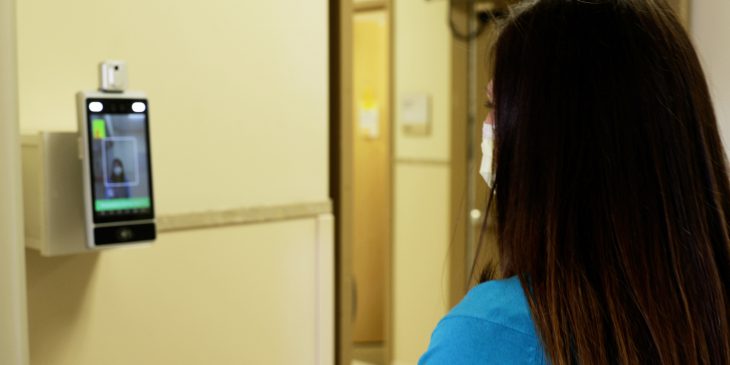The smart and flexible use of technology has always been a driving force in the growth and success of UPMC – from the early adoption of electronic medical records to the use of surgical robots to the development of a clinical data warehouse aimed at advancing personalized medicine.

Chris Carmody
But in a world that’s been turned upside down by the COVID-19 pandemic, technology has never been more important than it is right now.
From the very beginning of the pandemic early last year, UPMC technology experts and clinicians, working shoulder to shoulder with a variety of technology partners, have accelerated the use of digital solutions to ensure safety at our hospitals, continued access to care for patients who couldn’t see their doctors in person, productivity for workers forced to work remotely, and so much more. And each day seems to bring new demands to adapt to changing needs – most recently with the rapid establishment of vaccination clinics and a network of infusion sites to provide life-saving monoclonal antibodies across the regions we serve.
Even as a technology executive with more than two decades of experience in health care, I’m truly amazed at the scope and speed of change. Consider just a few examples:
• Thanks to previous investments made to ensure flexibility and mobility for our staff, UPMC was able to quickly support a workforce that suddenly found itself working remotely. With the widespread use of Microsoft’s Office 365 tools, the information services team supports over 78,000 unique users working remotely when needed – or 85% of our staff. We distributed over 900 remote access points to enable newly remote call center staff to connect to the UPMC network securely, ensuring continuing service for our patients and Health Plan members.
• To keep our hospitals safe for patients and staff, we quickly implemented digital temperature scans at hospital entrances, with the help of tech partner Certify. We’ve digitally captured more than 16 million temperatures to streamline efforts to stop the spread of COVID-19. Our Certify platform was originally used by patients to register at hospitals and outpatient sites with the touch of a finger – but we worked closely with this partner to adapt this biometric technology to our evolving needs.
• When eagerly awaited vaccines arrived on the scene late last year, we once again worked with Certify to create an electronic platform for registering non-UPMC health care workers and later patients to sign up for their shots. This technology has helped us to track and smoothly deliver more than 470,000 vaccines at clinics and pop-up events across all of the regions we serve.
• To enable our providers to continue to examine and treat patients throughout the crisis, telemedicine technology was successfully scaled to accommodate a 50-fold increase in virtual care visits. In 2020, UPMC supported about 1.1 million ambulatory telemedicine visits. To give you a sense of the daily scale, we now have about 6,500 such visits a day—even after the COVID peak–compared to 250 a day before the pandemic.
Our list could go on and on to encompass technology that has driven COVID-19 research, testing, disease tracking and every other facet of this pandemic.
Most importantly, though, the breathtaking pace of change has resulted in better experiences for our patients, insurance members and staff. For instance, more than 90% of our staff rate their remote work experience as excellent or very good, and more than 60% report an increase in their productivity. And more than 80% of patients surveyed about their virtual visits gave the highest satisfaction score possible, and many report that they get more “face time” with physicians than for in-person appointments.
There’s no question that the pandemic has been a catalyst for accelerating the transformation of health care, even at UPMC, where we’ve long prided ourselves on being ahead of the curve. The pandemic has also proved why so many of us technology professionals choose to work in health care. Being able to make an impact on the delivery of care for people at their most vulnerable time is truly a greater calling and purpose than a technology career alone. I’m so incredibly proud and humbled to be working in this profession.
The question now for the industry is whether this cultural change will be long-lasting. At UPMC’s Information Technology Division, we’re determined to remember the lessons we’ve learned throughout this difficult period about the need for speed, flexibility, resilience and innovation. As Sir Winston Churchill once said, “Never let a good crisis go to waste.”
Chris Carmody is the senior vice president of UPMC’s Information Technology Division.








